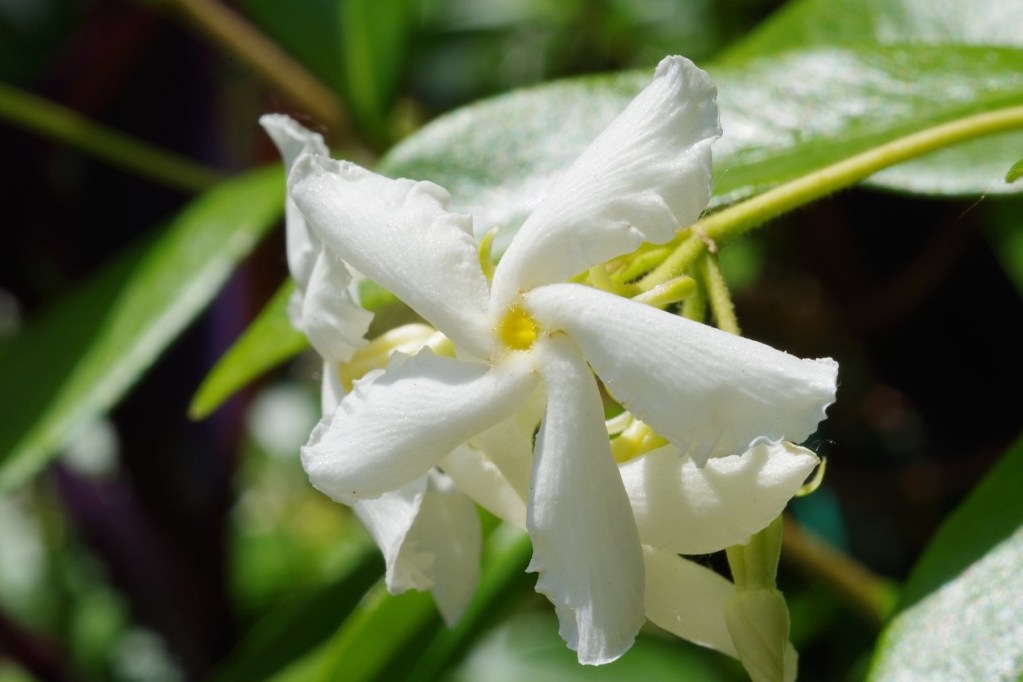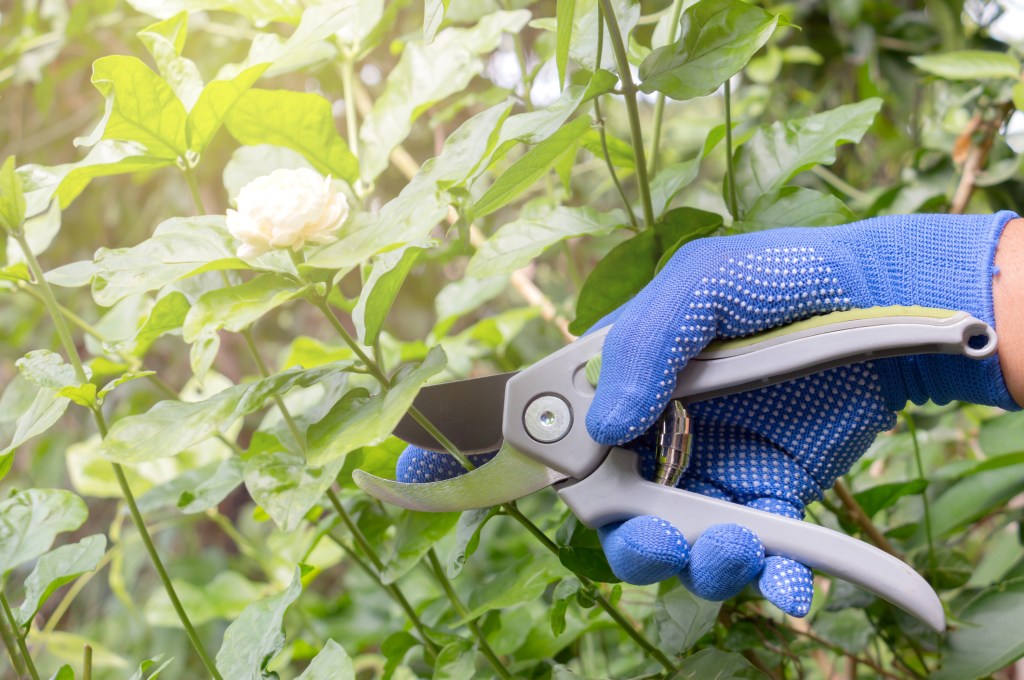
A lovely note in floral perfumes, jasmine is one of the most fragrant plants out there and features a light, sweet scent when in full bloom. If you need more jasmine in your life, then you’ll be thrilled to learn that jasmine is simple to propagate. There are three different methods for creating more of this beautiful, fragrant plant. Interested in learning how to propagate jasmine? Then this is the guide for you! We’ll explain the three simple methods you can use to fill your garden and home with jasmine.

When should you propagate jasmine?
The ideal time to propagate jasmine is right after it blooms, which is usually during the spring or summer. Around this time of year, you’ll likely be pruning your plant anyway, so it’s an opportune time to pick out some cuttings from fresh stems while you’re shaping your jasmine.
It’s best to take your cuttings during the morning when the plant is still relatively hydrated. If you’re taking hardwood cuttings from an outdoor variety (such as climbing jasmine), you can start the propagation process during the winter. You can overwinter jasmine for a few months before it’s warm enough to transplant outside — ideally, you should wait for the outdoor temperatures to reach 70 degrees Fahrenheit.

Method 1: Can I grow jasmine from cuttings?
Growing jasmine from cuttings is the easiest way to propagate it. So how do you start jasmine from a cutting? Start by taking 4- to 6-inch stem tips of semi-hardwood jasmine, being careful to use sterile pruning shears to avoid spreading any bacterial or unwanted fungal infections. Pick off any spent blooms, then remove the lower leaves of your cuttings, leaving at least three upper leaves on each cutting. Dip the cut ends into a rooting powder to help encourage growth and then place the cutting in a damp potting mix.
How long does it take jasmine cuttings to root?
Jasmine cuttings usually take about four to six weeks to take root, though this amount of time can vary. If, for example, you decide to skip rooting hormone, it might take longer for your cutting to root. Factors such as lighting and watering will also determine how fast your plant grows; bright indirect light and consistently damp soil are musts for successful propagation. To encourage growth and increase the humidity, you can also replicate a greenhouse by placing a supermarket bag or clear plastic milk jug over your plant — this technique can especially be helpful during dry, hot months.
Will jasmine cuttings root in water?
Jasmine cuttings can take root in water, but water propagation can be inefficient. You’ll want to submerge the cut end of your cutting with exposed nodes into water. You also need to make sure that you change out your water every so often to prevent any buildup in the water from damaging your cutting.

Method 2: Can I grow jasmine from seed?
Some types of jasmine do set seed, but it may be hard to get these seeds to germinate. If you want to grow jasmine from seed, start your seeds three months before your last frost. Before sowing them into peat or plastic cells, soak your seeds about one day beforehand. Remember to water your jasmine consistently and give it direct sunlight to encourage growth. It’s best to take your jasmine outside once the temperatures average above 70 degrees Fahrenheit, but you can also keep it inside as an ornamental indoor houseplant if you so desire.

Method 3: Can I propagate jasmine by air layering?
One way to propagate jasmine is by air layering. This method works best during the spring or early summer if you have jasmine that vines or has low branches. Starting at 12 to 18 inches from a stem’s tip, make two horizontal scrapes 1/2 to 1 inch long, then make a vertical scrape, peel off the bark, and scrape off the green layer beneath the bark all the way around your stem.
Cover the wounded portion with rooting hormone, wrap it up in damp sphagnum moss, then cover everything with plastic wrap. Keep the moss consistently moist until you notice roots forming. Once roots form, cut the stem beneath the roots and remove the plastic.

How to care for jasmine after you get it to root
After you root and transplant your jasmine cutting, give it the optimal conditions to thrive. Jasmine plants flourish in bright light, which helps them put out flowers. Jasmine prefers cooler temperatures but generally does best in conditions above 60 degrees Fahrenheit in climate zones 7 through 10. Throughout the growing season, keep your soil consistently moist and apply a standard liquid fertilizer every two weeks. In the fall and winter, allow the plant to dry out a little, watering whenever the top half-inch of soil feels dry to the touch.

How soon after propagation can you begin harvesting jasmine?
Jasmine flowers are great for drying, pressing, and potpourri, as well as in dishes such as teas or salads. If you want to harvest your jasmine for any of it’s myriad uses, then you’ll need to wait a few months after planting. When growing jasmine from seed, you typically need to wait six months to a year before harvesting. Propagation is generally faster, though. Depending on the method you choose and the season you’re propagating in, you might be able to start harvesting your jasmine twice as fast!
Jasmine plants begin blooming in mid to late spring and finish blooming in fall, so you can get several months of harvesting out of your plant. Avoid harvesting the flowers in the middle of the day, when the sunlight and heat can make the flowers limp. Early morning or night are the best times to harvest jasmine flowers.
If you’re looking to fill your garden with more jasmine plants, rest assured that it’s an easy process. You can go about multiplying this lovely, fragrant plant by way of rooting cuttings, growing seeds, or air-layering stems. With cuttings or air layering, you should have a new jasmine plant ready to root in just one month.



